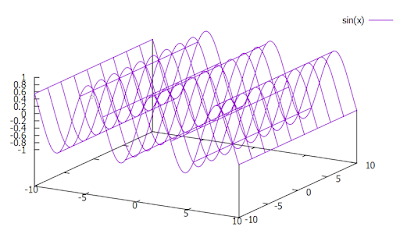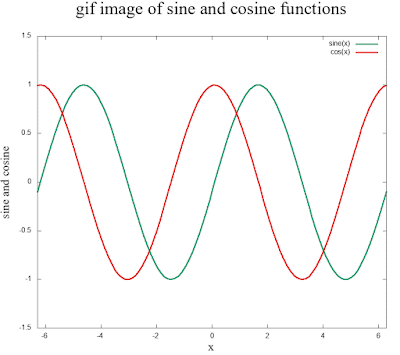NEB physics exam numerical problems with solutions for grade 12 students
This post provides you the numerical problems and their solutions of physics based on NEB(National Examination Board) syllabus grade 12.
Solutions of Previously Asked Numerical Problems in NEB exams.
Q.1. A coil consisting of 100 circular loops with radius 0.60 cm carries a current of 5A. At what distance from the center, along the axis, the magnetic field has magnitude as `\frac{1}{8}` great as it is at the center?
Solution:- Given,
number of circular loops = N = 100
radius of the loop, `r = 0.60cm = 6.0 \times 10^-3` m.
current, I = 5 A
Magnetic field at the center of loop = B (suppose)
magnetic field at distance x from the center = `\frac{1}{8}B`
To find, x = ?
The magnetic field at distance x from center of the coil is given as,
`B = \frac{\mu_o I N r^2}{2(x^2 + r^2)^(\frac{3}{2})}`.
By given in question,
magnetic field at x = `\frac{1}{8} \times` magnetic field at x = 0.
or, `\frac{\mu_o I N r^2}{2(x^2 + r^2)^(\frac{3}{2})} =\frac{1}{8} \frac{\mu_o I N r^2}{2(0^2 + r^2)^(\frac{3}{2})}` .
or, `\frac{1}{(x^2 + r^2)^(\frac{3}{2})} = \frac{1}{8} \frac{1}{(r^2)^(\frac{3}{2})}`
By cross multiplication,
`8 r^3 = \(x^2 + r^2)^\frac{3}{2}`.
or, `(2r)^2 = (x^2 + r^2)`.
or, `4r^2 = x^2 + r^2`.
or, 3r^2 = x^2`
or, `x = \sqrt{3r^2} = \sqrt{3 \times (6.0 \times 10^-3)^2}`.
or, `x = \pm 1.039 \times 10^-2`.
`\therefore` `x \approx 1.04` cm.
Thus, the magnetic field at distance 1.04 cm from the center axis of coil is `\frac{1}{8`} times that at the center of the coil.
👉 Check the link for Group 'A' question-answer of NEB grade 12 physics:- Link
Q.2. A circuit consists of an inductor of 200 `\mu`H and resistance of 10`\Omega` in series with a variable capacitor and a 0.10 V(r.m.s) 1.0 MHz supply. Calculate (i) the capacitance to give resonance (ii) the quality factor of the circuit at resonance.
Solution:- Given,
Inductance = L = 200 `\mu`H = `200 \times 10^-6 H`.
Resistance = R = 10`\Omega`.
Voltage V = 0.1 V
Frequency = f = 1.0 MHz = `1.0 \times 10^6 Hz`.
(i) Capacitance at resonance = C = ?
(ii) Quality factor of circuit at resonance = Q = ?
For C, at resonance,
`X_L = X_C`
or, `2 \pi f L = \frac{1}{2 \pi f C}`.
or, `C = \frac{1}{4 \pi^2 f^2 L}`.
or, `C = \frac{1}{4 \times \pi^2 \times (1.0 \times 10^6)^2 \times 200 \times 10^-6} F`
`\therefore` `C \approx 1.266 \times 10^-10 F` //.
Now for Q,
`Q = \frac{1}{R} \sqrt{\frac{L}{C}}`.
or, `Q = \frac{1}{10} \sqrt{\frac{200 \times 10^-6}{1.266 \times 10^-10}}`.
`\therefore` `Q \approx 125.69` //.
Q.3. An electron having 450 eV of energy moves at right angles to a uniform magnetic field of flux density `1.50 \times 10^-3`T. Find the radius of it's circular orbit. [Given specific charge of electron = `1.76 \times 10^11 Ckg^-1`]
Solution: - Given,
energy of electron = E = 450 eV
magnetic flux density = B = `1.50 \times 10^-3` T.
specific charge of electron = `\frac{e}{m} = 1.76 \times 10^11 Ckg^-1`.
radius of circular path of electron = r = ?
For electron to move in circular orbit due to magnetic field, the condition to be satisfied is,
`\frac{mv^2}{r} = Bev`.
or, `r = \frac{mv}{Be} ...............(1)`.
We need to determine value of v first. For this we have,
`E = 450 eV`.
or, `\frac{mv^2}{2} = 450 eV`.
or, `v = \sqrt{\frac{2 \times 450 eV}{m}}`.
or, `v = \sqrt{2 \times 450 V \times (\frac{e}{m})}`
or, `v = \sqrt{900 \times 1.76 \times 10^11}`
`\therefore` `v = 1.26 \times 10^7 ms^-1`.
Now use this value of v in eq(1), then we get,
`r = \frac{mv}{Be}`.
or, `r = \frac{v}{B} \frac{m}{e}`.
or, `r = \frac{v}{B} \frac{1}{\frac{e}{m}}`.
or, `r = \frac{1.26 \times 10^7}{1.50 \times 10^-3} \frac{1}{1.76 \times 10^11}`.
`\therefore` `r = 4.77 \times 10^-2 m` which is the required radius of circular orbit. //
Q.4. Light of frequency `5 \times 10^14 Hz` liberates electrons with energy `2.3 \times 10^-19 J` from a certain metallic surface. What is the wavelength of ultraviolet light which liberates electrons of energy `8.93 \times 10^-19 J` from the same surface? [Planck's constant = h = `6.67 \times 10^-34 Js`]
Solution:- Given,
For first light,
frequency = `f_1 = 5 \times 10^14 Hz`.
energy = `E_1 = 2.3 \times 10^-19 J`.
For second (ultraviolet) light,
energy of liberated electrons = `E_2 = 8.93 \times 10^-19 J`.
wavelength of light = `\lambda_2 =`?
suppose, work function of metal in both cases = `\Phi`.
speed of light = c = `3 \times 10^8 ms^-1`.
Using Einstein's equation of photoelectric effect,
`hf_1 = E_1 + \Phi ..........(1)`
and `hf_2 = E_2 + \Phi .........(2)`
subtracting (1) from (2)
`h(f_2 - f_1) = E_2 - E_1`.
or, `f_2 - f_1 = \frac{E_2 - E_1}{h}`.
But `f = \frac{c}{\lambda}`.
We need to find out `\lambda_2`. So, using this relation in place of `f_2` only, gives us
`\frac{c}{\lambda_2} - f_1 = \frac{E_2 - E_1}{h}`.
or, `\frac{c}{\lambda_2} = f_1 + \frac{E_2 - E_1}{h}`.
or, `\frac{c}{\lambda_2 } = (f_1 + \frac{E_2 - E_1}{h})`
Now using values of all parameters,
`\frac{c}{\lambda_2} = (5 \times 10^14 + \frac{8.93 \times 10^-19 - 2.3 \times 10^-19 }{6.67 \times 10^-34})`
or, `\frac{c}{\lambda_2} = (5 \times 10^14 + 9.94 \times 10^14)`.
or, `\frac{c}{\lambda_2} = 14.94 \times 10^14`.
or, `\lambda_2 = \frac{c}{14.94 \times 10^14}`.
or, `\lambda_2 = \frac{3 \times 10^8}{14.94 \times 10^14}`.
`\therefore` `\lambda_2 = 2.01 \times 10^-7 m`.
Thus, required wavelength of the ultraviolet light is `2.01 \times 10^-7` m.//
Q.5. At a certain instant, a piece of radioactive material contains `10^12` atoms. The half life of the material is 30 days. Calculate the number of disintegration in the first second.
Solution:- Given,
half life of the material = `t_(\frac{1}{2})` = 30 days
initial number of atoms = `N_o = 10^12`.
rate of disintegration in the first second = `\frac{dN}{dt} = ` ?.
We know that Decay equation is given as,
`N = N_o e^(- \lambda t)` .......(1)
Also,
Decay rate = `\frac{dN}{dt} = \lambda N .........(2)`
Here, `\lambda` is called Decay constant or disintegration constant, which can be given as,
`\lambda = \frac{0.693}{t_(\frac{1}{2})}`
or, `\lambda = \frac{0.693}{30 days}`
or, `\lambda = 0.0231 day^-1 = \frac{0.0231}{ 24 \times 60 \times 60} sec^-1`
`\therefore` `\lambda = 2.7 \times 10^-7 sec^-1`.
Now using values in (1) for t = 1 sec,
`N = 10^12 \times e^(- 2.7 \times 10^-7 \times 1)`.
`\therefore` `N = 9.99 \times 10^11`.
Using this value in (2),
`\frac{dN}{dt} = \lambda \times N`
`\frac{dN}{dt} = 2.7 \times 10^-7 \times 9.99 \times 10^11`
`\therefore` `\frac{dN}{dt} = 2.69 \times 10^5` atoms/sec.//
Q.6. An open pipe 30 cm long and a closed pipe 23 cm long, both of the same diameter are each sounding it's first overtone, and these are in unison. What is the end correction of these pipes ?
Solution:- Given,
length of open pipe = `l_o` = 30 cm = 0.3 m
length of closed pipe = `l_c` = 23 cm = 0.23 m
Since both pipes have same diameter, their end correction is same.
Let it be 'e', then
frequency of first overtone for the open pipe is,
`f_o = 2 \times \frac{V}{2(l_o + 0.6e)} ...........(1)`.
Where V is velocity of sound and `\frac{V}{2(l_o + 0.6e)}` is the fundamental frequency for open pipe.
frequency of first overtone for closed pipe is,
`f_c = 3 \times \frac{V}{4(l_c + 0.3e)} ...........(2)`.
where `\frac{V}{4(l_c + 0.3e)}` is the fundamental frequency for closed pipe.
Since both pipes are in unison, then
`f_o = f_c`.
or, `2 \times \frac{V}{2(l_o + 0.6e)} = 3 \times \frac{V}{4(l_c +0.3e)}`.
or, `4(l_c + 0.3e) = 3(l_o + 0.6e)`.
or, `4l_c + 1.2e = 3l_o + 1.8e`.
or, `0.6e = 4l_c - 3l_o`
or, `e = \frac{4 \times 0.23 - 3 \times 0.3}{0.6}`.
or, `e = \frac{0.02}{0.6}`.
`\therefore` `e = 0.03 `m. //
Q.7. In a Young's slits experiment, the separation of four bright fringes is 2.5 mm when the wavelength used is `6.2 \times 10_7` m . The distance from the slits to the screen is 0.80 m. Calculate the separation of the two slits.
Solution:- Given,
separation of `4^th` bright fringes ('y_4') 2.5 mm = `2.5 \times 10^-3`.
wavelength of light used = `\lambda` = `6.2 \times 10^-7 m`
distance between slits and screen = `D` = 0.80 m
separation of two slits = d = ?
Using the value of fourth bright fringe is given by,
` \lambda_4 = \frac{4D \lambda}{d}`.
or, `d = \frac{4D \ lmbda}{y_4}`.
or, `d = \frac{4 \times 0.80 \times 6.2 \times 10^-7}{2.5 \times 10^-3}`.
`\therefore` `d = 7.9 \times 10^-4` m










Comments
Post a Comment